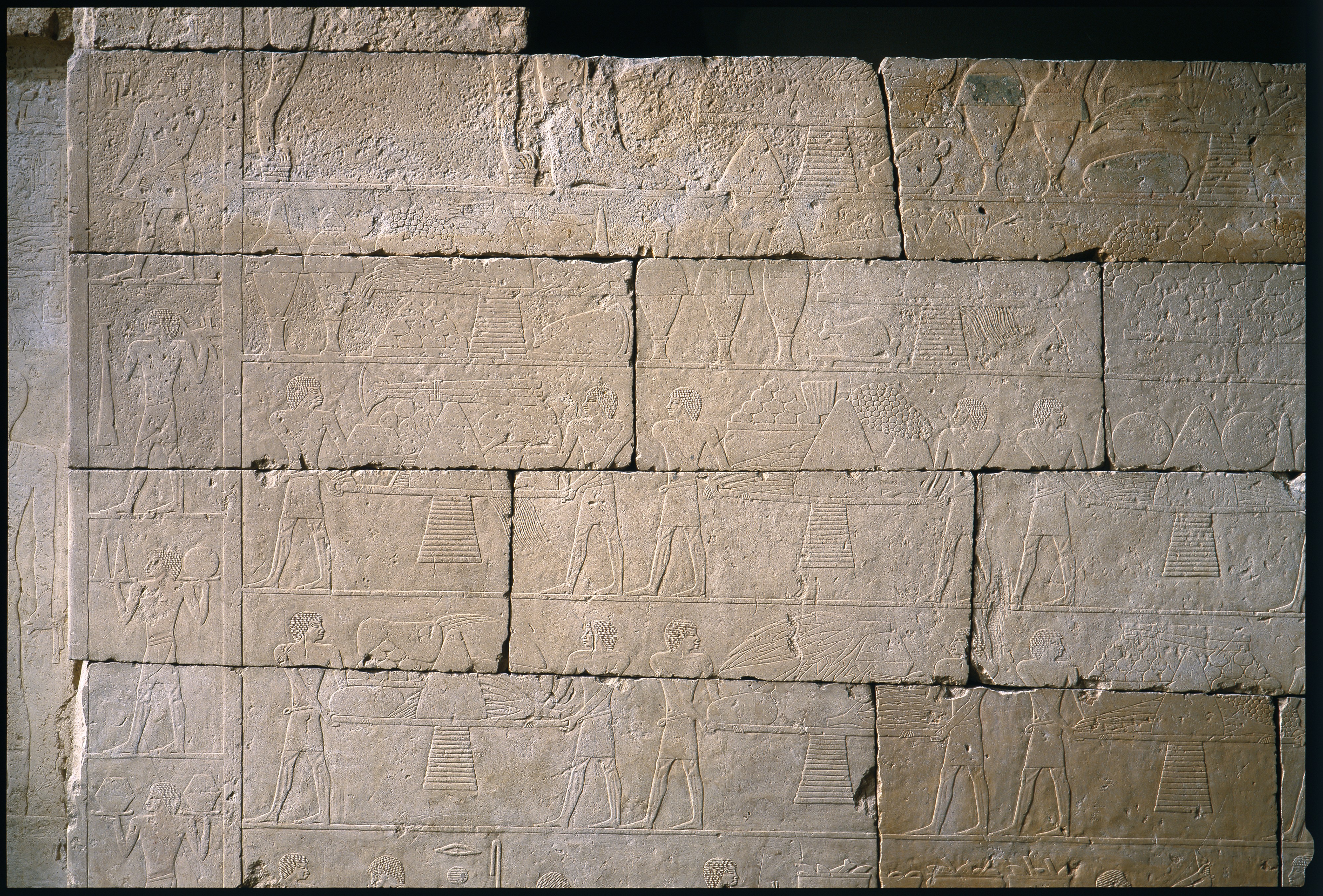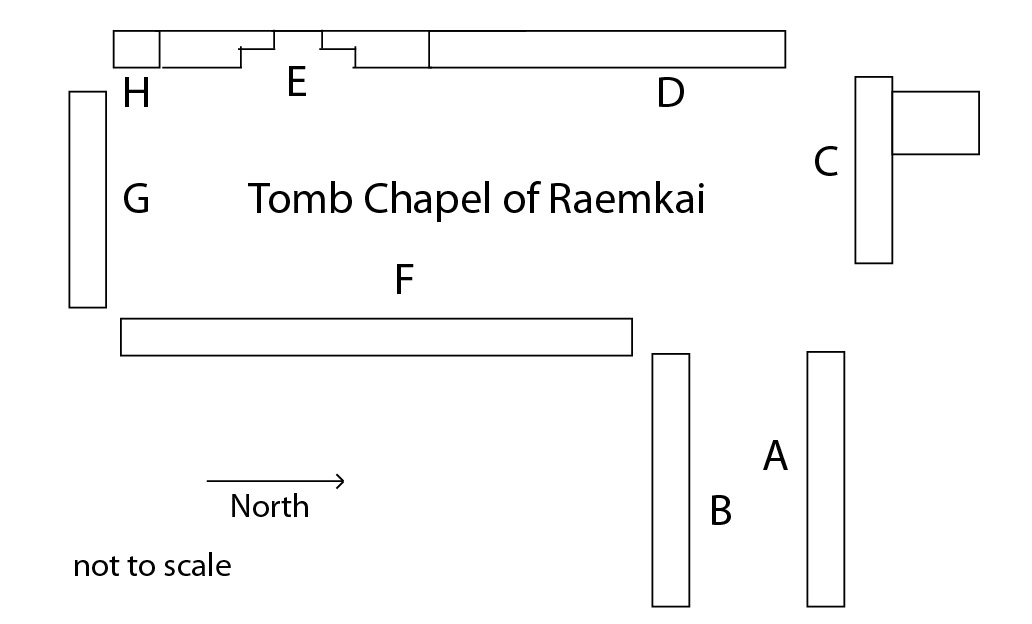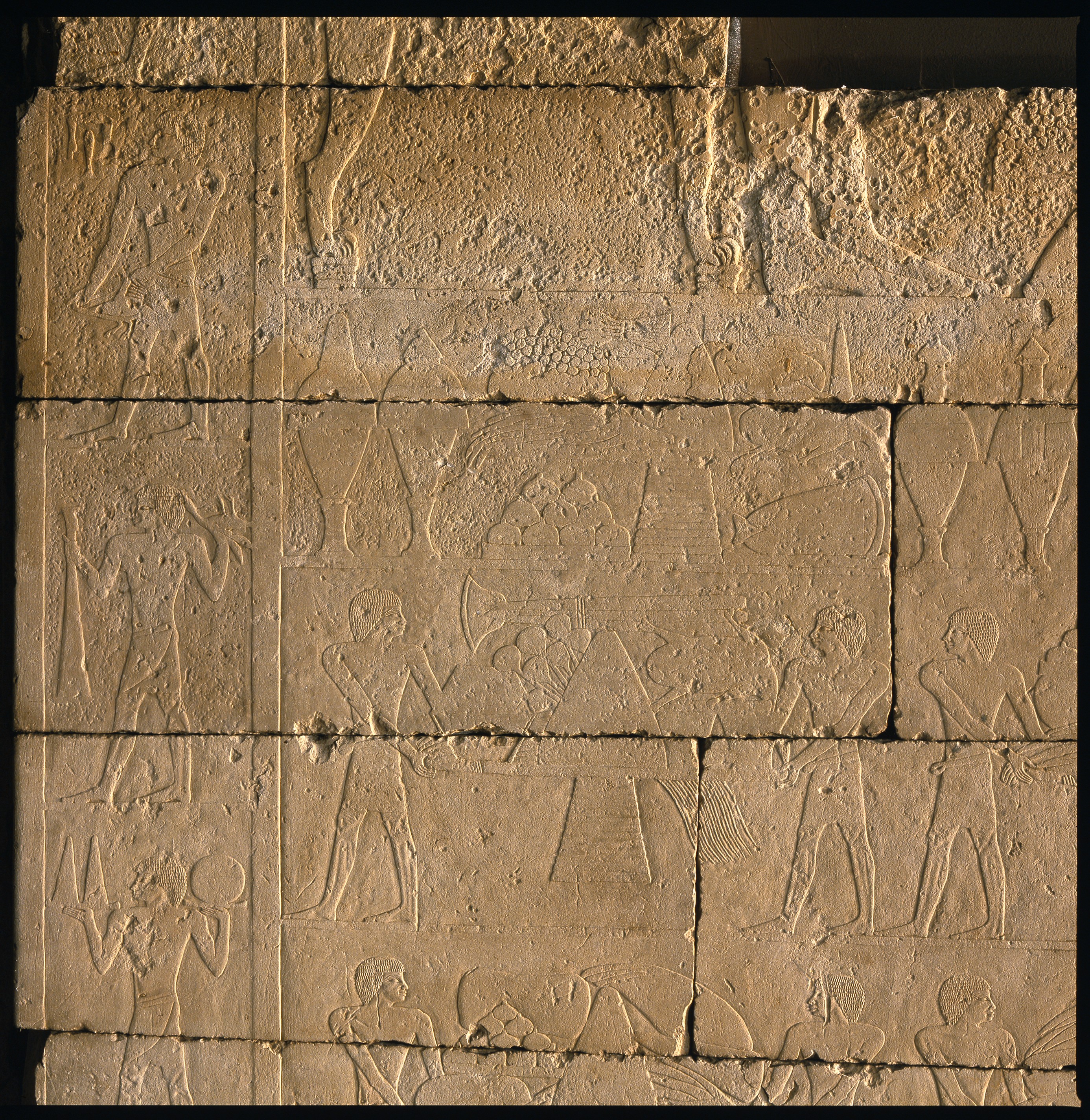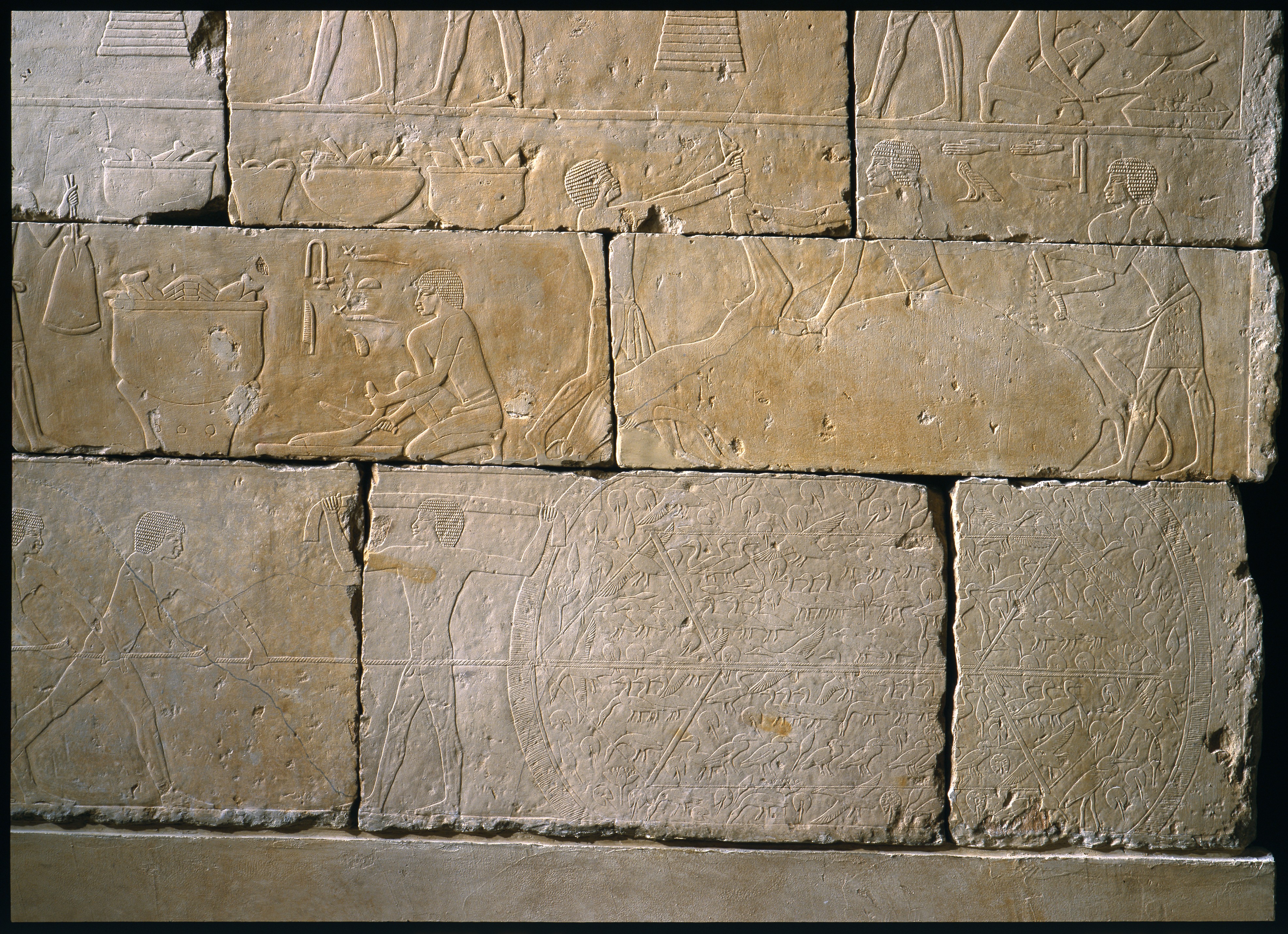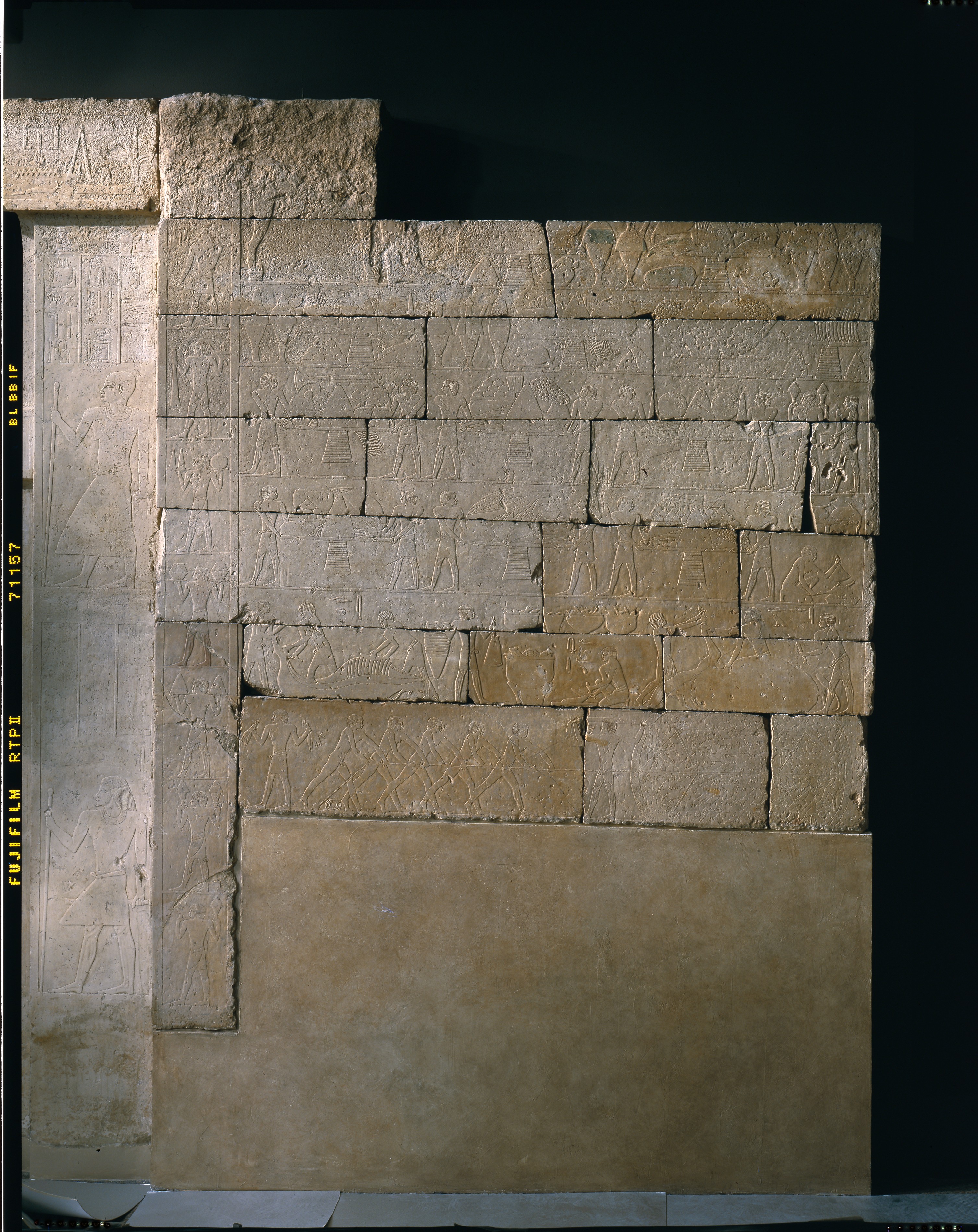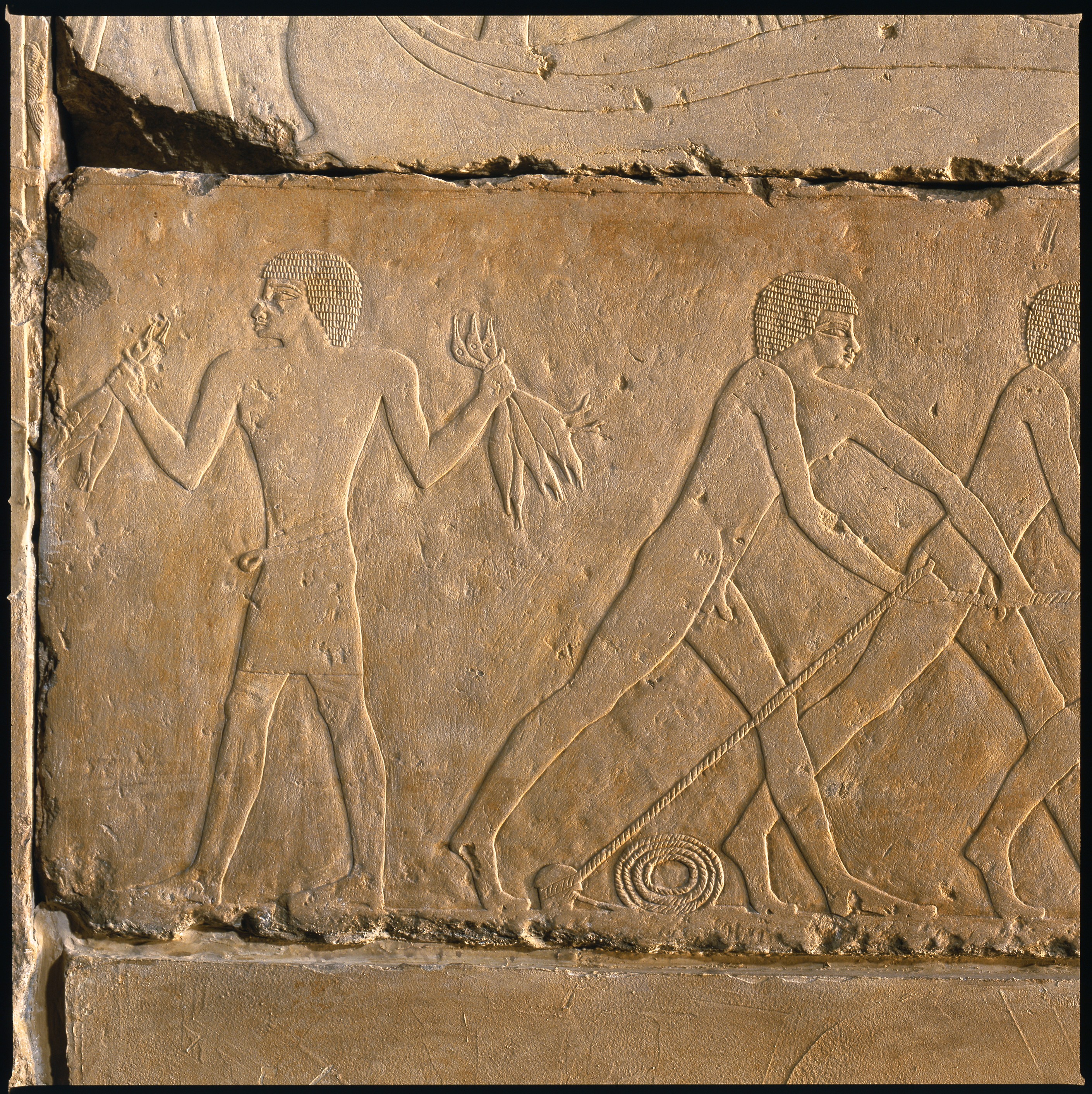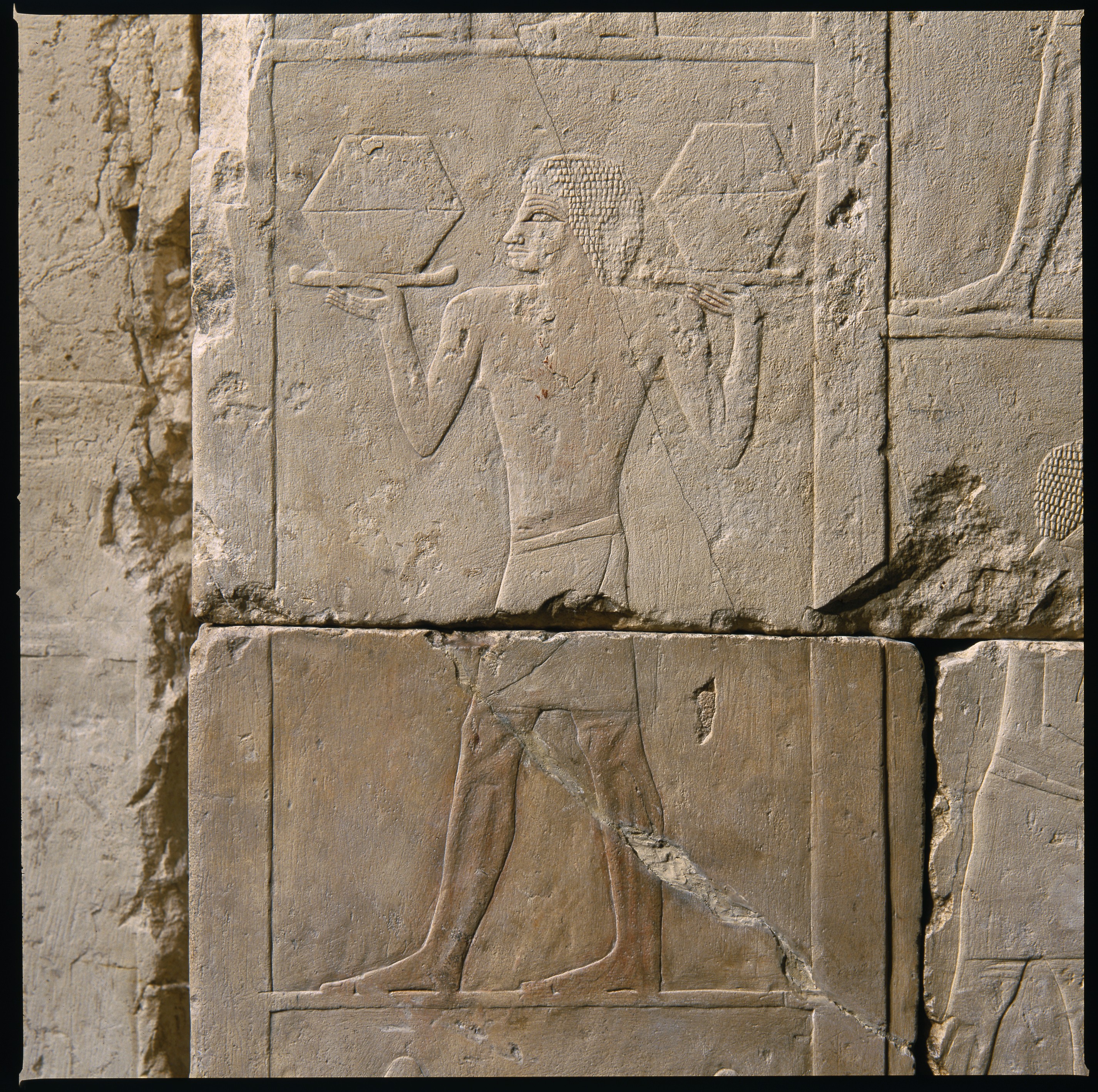Tomb Chapel of Raemkai: West Wall
Old Kingdom
THE WEST WALL
In ancient Egyptian mythology the west was the realm of the dead. Therefore, in all Old Kingdom tombs, west walls incorporate a symbolic doorway (called a False Door by Egyptologists) as a focal point for prayers and offerings. Along with the False Door (08.201.1e), west walls usually present scenes that are closely related to the offering rituals. On this west wall, to the right of the large False Door, rows of attendants bring tables on which offerings are heaped. In the uppermost preserved register the tomb owner, seated on a lion-legged chair, receives the gifts. The butchering scene in the second register from the bottom is also appropriately placed on this wall, as meat was among the most important life-affirming offerings.
Butchering and Meat Preparation
The representation in the second register from the bottom is structured symmetrically. At right and left, groups of men work on butchered cattle, while in the center, a cook cuts meat on a low block. Choice cuts simmer in a basin over a terracotta stove, and more basins are positioned nearby. The scene includes some unusual details. Stages in the butchering like the one on the left that shows the animal's exposed ribcage were only rarely depicted. Even more unusual is the image at the far right, which shows small chips falling from a flint knife that is being knapped with a bone instrument for sharpening. Inscriptions were added only to the activities less frequently seen: "butchering" is written above the jointing on the left, "cooking meat" appears in the center, and "knife-sharpening" on the right. Thematically, the man roasting a duck at the far right of the register above should be part of this slaughtering scene, but there was no space for him below.
Bird-Catching
In the bottom register a large clap-net is pulled closed by five men. The net is tightly packed with all kinds of birds; lotus flowers and leaves float around them, indicating that the trap was placed in a pool in the marshes. The men's nudity (an unusual detail) further emphasizes their aquatic environment. The pool is surrounded by reeds and papyrus plants, but their depiction here is so stylized that they resemble a low fence. In reality, the reeds were higher than a man, so that the haulers could not see the net. Therefore, a signalman was stationed close to where the trap had been set to signal the haulers when it was time to pull. Since shouting would disturb the birds, the signalman raises a stretched piece of cloth. At left another man who has already collected a few birds presents them to the offering place at the False Door.
Due to rights restrictions, this image cannot be enlarged, viewed at full screen, or downloaded.
This artwork is meant to be viewed from right to left. Scroll left to view more.


